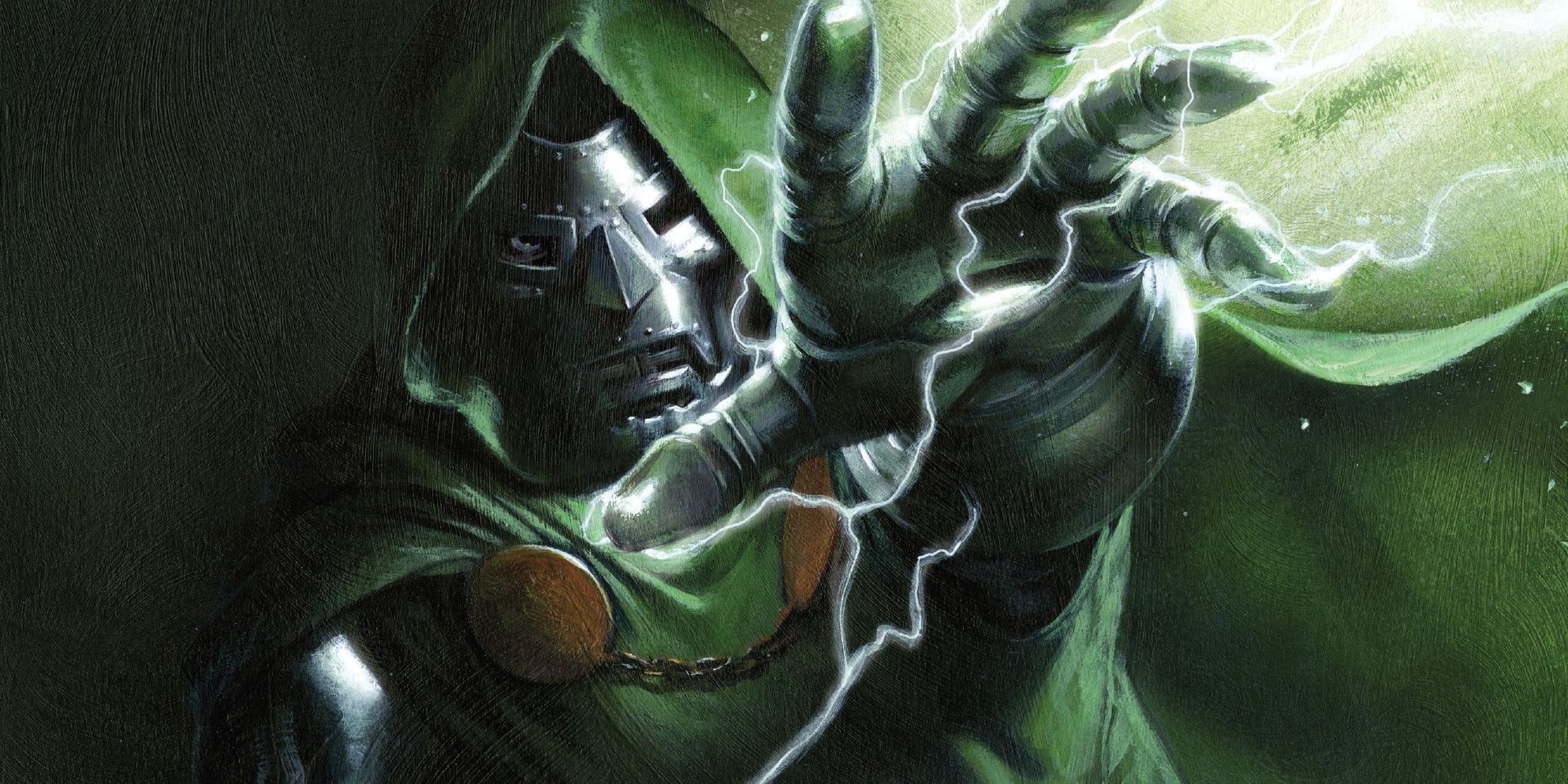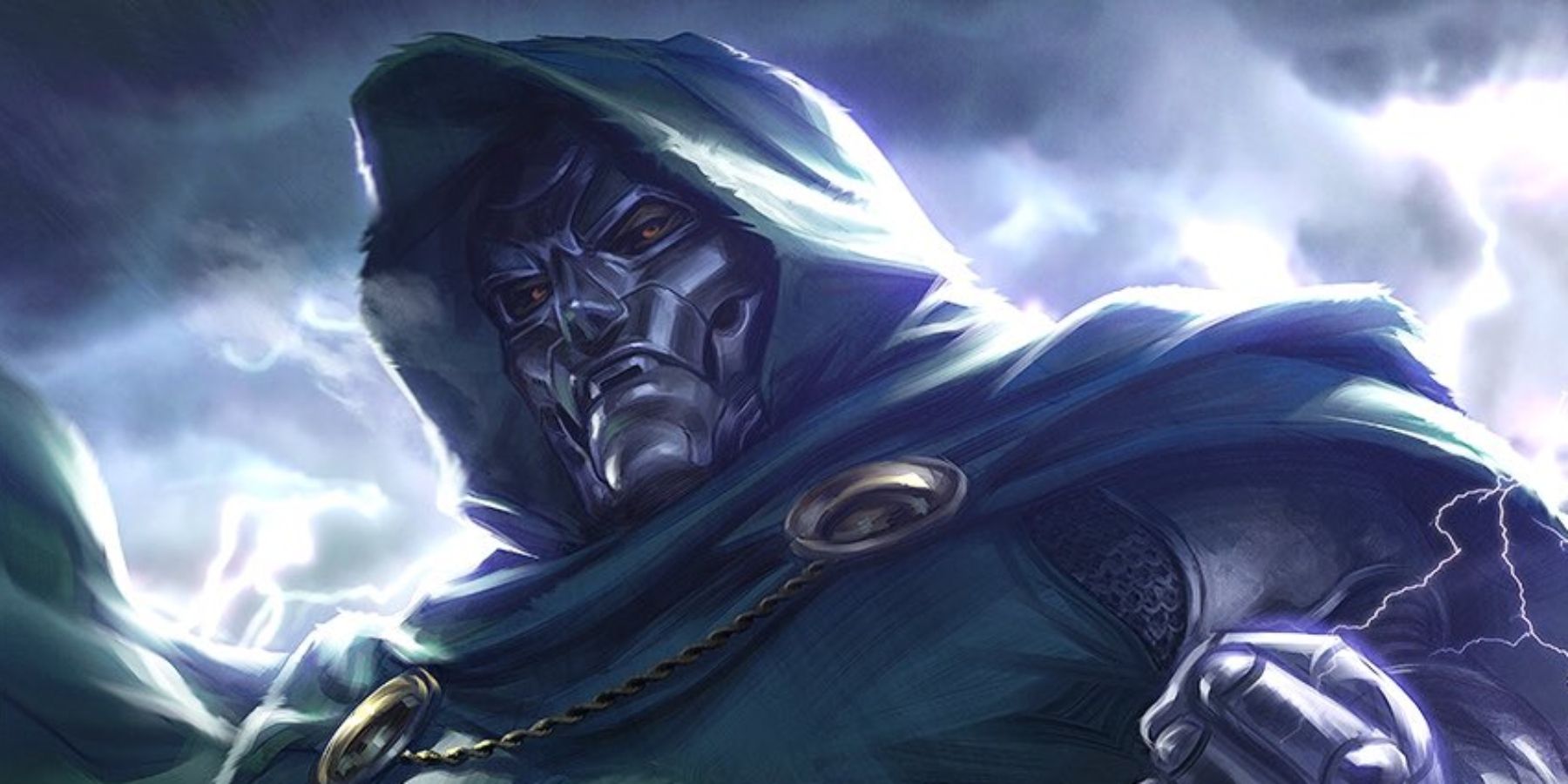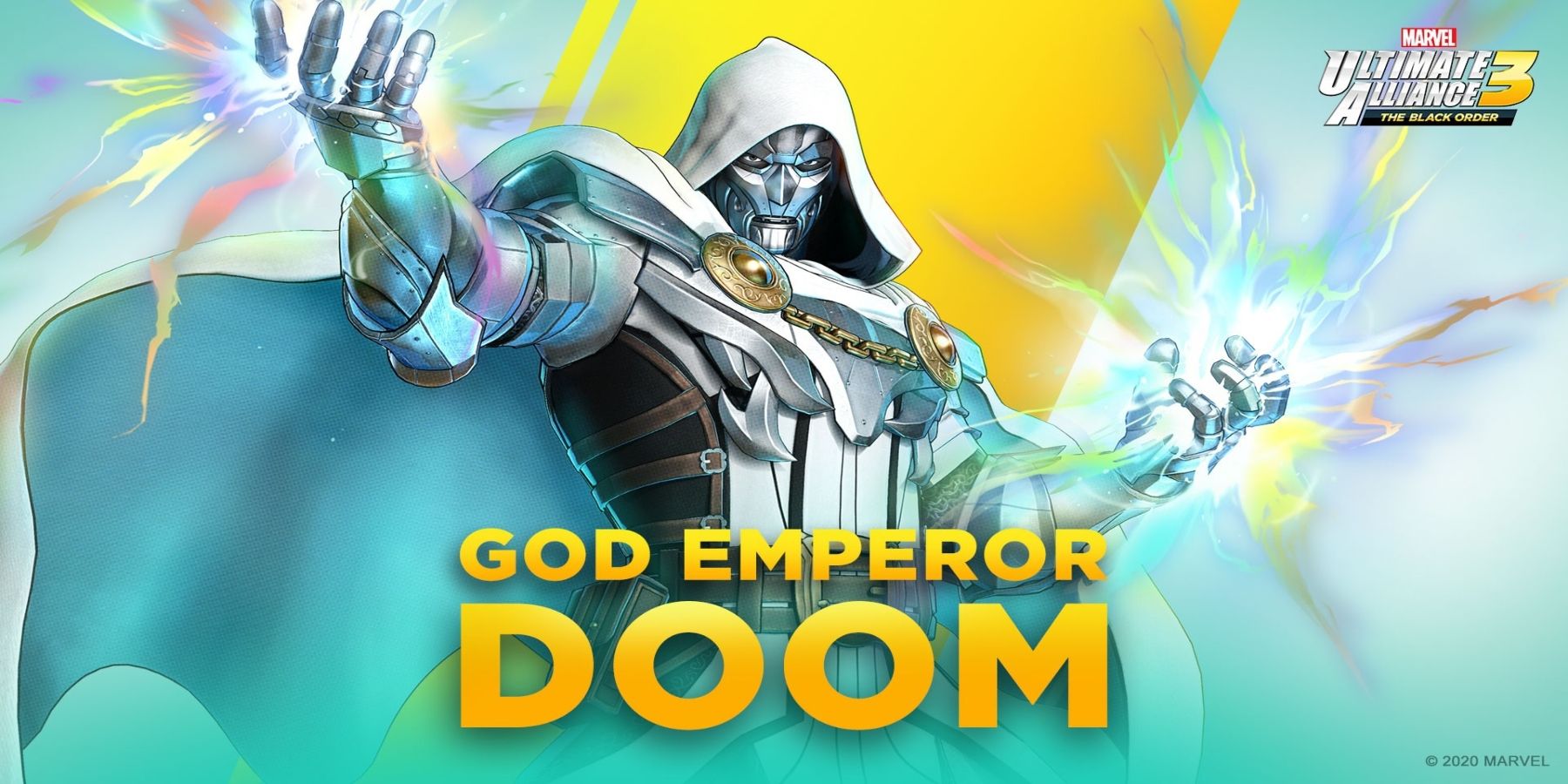Out of all the comic villains who have yet to appear in the Marvel Cinematic Universe, none are as highly anticipated as Doctor Doom. Doom’s enduring popularity among Marvel fans may be confusing to those who only recognize the character from his past cinematic appearances — but those familiar with his comic history, he’s one of Marvel’s most iconic supervillains ever.
Victor Von Doom made his theatrical debut played by Julian McMahon in the 2005 Fantastic Four film, in which he was depicted as a generic evil billionaire with lightning powers. He later appeared as the villain of the infamous 2015 reboot, in which Toby Kebbell portrayed him as a cynical young scientist who becomes the ruler of another dimension called Planet Zero. Neither of these interpretations have much in common with the Doctor Doom of the comics, essentially making them Doom in name only.
Doctor Doom was created by Stan Lee and Jack Kirby in July of 1962, making his comic debut in The Fantastic Four #5. Like many of Lee and Kirby’s villains, Doom wasn’t the most complex antagonist in his first appearance, but what he lacked in nuance he made up for in memorability. Doom is immediately established as both a brilliant scientist and a master sorcerer, and this dual nature is emphasized by his evil plan, in which he uses a futuristic time machine to send the FF back in time to retrieve a set of mystical gemstones enchanted by Merlin himself. While Doom’s first appearance is downright bare-bones compared to his later schemes, he became popular enough with the fans and creators alike that he immediately reappeared in Fantastic Four #6, and soon after in issue #10.
Lee and Kirby would later explore Doom’s full origin in the giant-sized special issue Fantastic Four Annual #2, which revealed Victor’s childhood in the tiny fictional nation of Latveria, located where the border of Hungary, Romania, and Serbia lies in the real world. Victor was the child of a physician father and a sorceress mother, who died when he was still a child due to the ruling class’ bigotry towards Latveria’s Romani population. Doom swore to avenge his parents’ deaths, studying both science and magic in the pursuit of greater power. As a teenager, Victor became a Robin Hood-esque hero to the common people of Latveria, using extraordinary gadgets to steal from the rich and give to the poor. News of these exploits made their way to America, and Victor was soon offered a full scholarship to Empire State University.
Victor traveled to America in pursuit of greater knowledge, but instead found a rival in the form of Reed Richards — the first intellectual equal Doom had ever met. During his time at ESU, Victor created a machine that would allow him to communicate with the lost soul of his mother. Richards attempted to warn Victor about a flaw in the machine’s design, but Doom’s ego refused to heed this warning. As a result, the machine exploded, leaving Victor’s face scarred. Victor blamed Richards for the accident, believing that Reed tampered with his experiment out of envy. The newly disfigured Victor continued traveling the world in search of knowledge and power, eventually constructing a suit of armor and taking the name Doctor Doom. Doom returned to Latveria, leading the common folk in a revolution and overthrowing the corrupt aristocracy. He even killed King Vladimir Fortunov, the man who turned his family into fugitives, thus avenging his parents’ deaths at last.
Doom himself soon took the throne of Latveria, transforming a tiny, poverty-stricken nation into a high-tech police state. But Lee and Kirby also established one more curious detail in their account of Doom’s origin — the people of Latveria may live in fear of Doctor Doom, but they also revere him as the savior who brought peace and prosperity to their land. Later Lee-Kirby issues would expand on this idea, establishing Doom’s characterization as a benevolent dictator who sees his tyranny as the only way to bring peace and order to the world. As Doom himself puts it in Fantastic Four #84, “How ungrateful are those who will not accept the rule of Doctor Doom! Do I not give them shelter... provide them with food? And all that I ask is total, blind obedience!”
That is the ultimate dichotomy of Doom — he has turned his kingdom into a utopia where all needs are provided for, but he has done so at the cost of freedom. He is both savior and oppressor, both victim and villain. Like Magneto, Killmonger, and the MCU’s Thanos, Doctor Doom is driven by a genuine desire to end the suffering of others, but he would create his utopia on a foundation of corpses. And while he could have been a great hero in another life, Doom’s narcissism has convinced him that only through his absolute control can the world ever know true peace.
And like Earth’s mightiest heroes, Doom’s unstoppable determination to save the world — albeit in his own twisted Machiavellian way — has led him to go up against impossible odds and emerge victorious. Ever since he stole the Silver Surfer’s Power Cosmic in Fantastic Four #57, Doom has made a habit of attaining absolute power by draining it from other entities. He once even used Kilgrave’s mind control power to brainwash the entire world in the 1987 graphic novel Emperor Doom, only to set humanity free after realizing he felt no satisfaction in ruling over a world that didn’t willingly kneel before him.
But perhaps Doom’s most iconic story is 1984’s Secret Wars, in which he successfully steals the power of a godlike being known as the Beyonder, and begins to remake the world in his image. For two brief issues, Doom successfully ascended to godhood, holding total authority over reality itself, only to lose control of the power due to his own buried self-doubt. Despite having the will to command vast cosmic power, Victor Von Doom is still only human. This theme would reappear in that story's spiritual sequel, the 2015 Secret Wars series by Jonathan Hickman, which sees Doom merge the entire multiverse into a single Earth which he rules as self-proclaimed God-Emperor. Despite being absolute ruler of a united world, Doom realizes that his kingdom is still imperfect, and eventually admits to his own flaws in a final battle against Mr. Fantastic.
That’s the ultimate reason why Doom’s MCU arrival is so eagerly awaited by fans — not just because he’s a cool bad guy, but because he’s one of the most nuanced, compelling antagonists in Marvel history. Despite his campy appearance, Doom has all the tragic humanity, ruthless ambition, and theatrical charisma of Shakespeare’s greatest villains. And like the most popular MCU rogues, he’s a terrifying threat to the heroes while also being a complex and sympathetic character. He’s the ultimate “ends justify the means” villain, noble in his intentions yet totalitarian in his methods. In a few years’ time, Doctor Doom could very well dethrone Thanos as the MCU’s most iconic villain. But until then, fans will have to keep waiting for the tyrant lord of Latveria to make his true big-screen debut.



